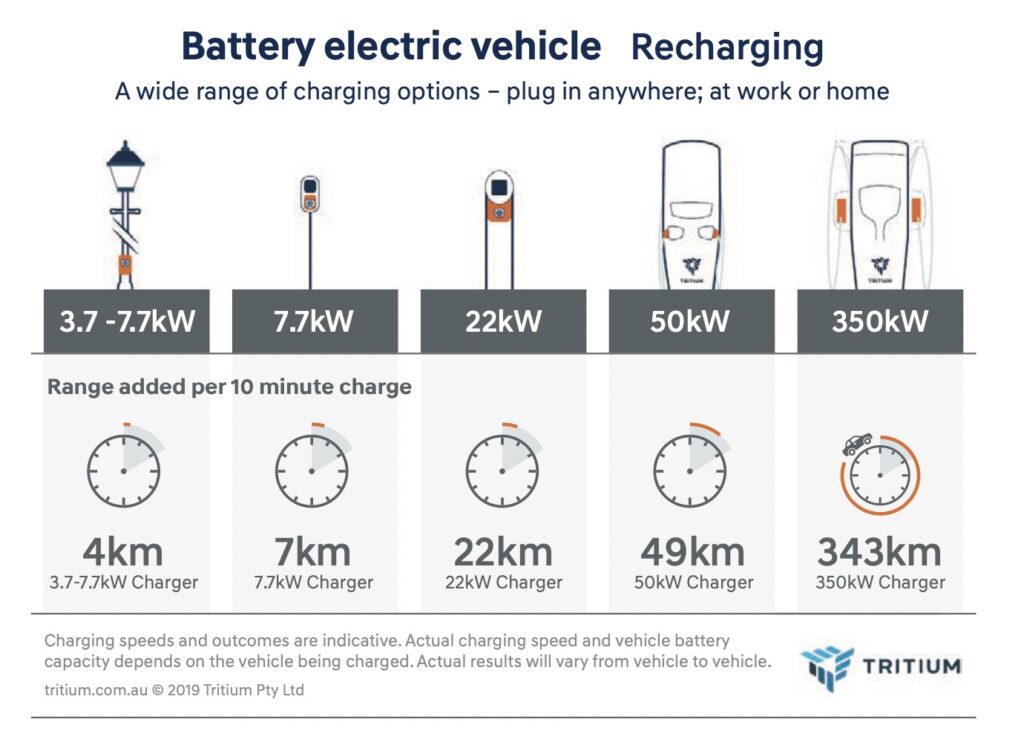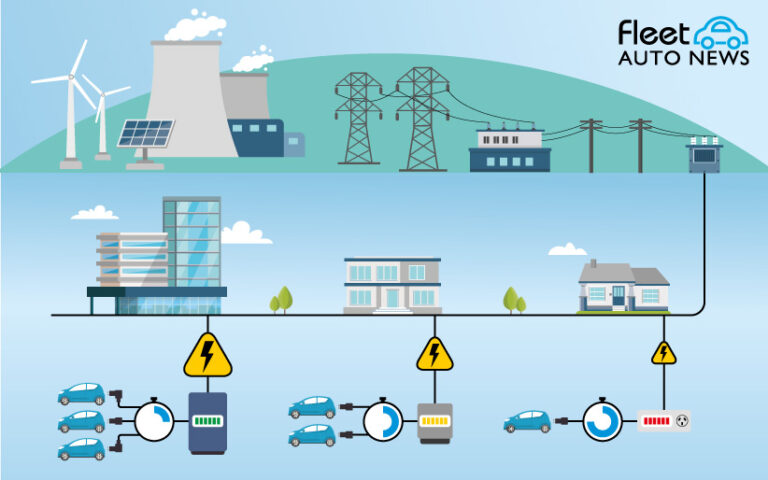Size is everything when you’re buying a TV though bigger is better doesn’t translate to electric vehicle charging. There are many variables to consider when planning a transition for your fleet of cars and trucks to electric powertrains.
Before you start thinking about chargers, you should investigate how the power is getting onto your property and how much spare capacity is available to charge a fleet of EVs. This can be a complicated task if you’re leasing the building because you’ll need to deal with the owner who may not be supportive of your emissions targets.
When you start planning for chargers, understanding the habits of your fleet is critical to designing the layout of the parking area where the chargers will be installed.
The fleets that were the first to purchase EVs worked on one-to-one ratios of chargers and vehicles. As early adopters they were willing to go through a trial and error phase with the vehicles and the infrastructure.
Most installed AC chargers that delivered 7kW per hour which matched the vehicle’s ability to accept the electricity. It also fitted the fleet usage patterns because they were pool cars being used during the day and parked overnight in the same spot. These early EVs played an important role in educating staff and providing Fleet Managers with lessons for what might happen when converting the entire fleet.
Now, the most popular size of charging station being considered by fleets is a 22kW unit. Fleet Managers now understand that a one-to-many ratio works because not all vehicles will need to charge at the same time, in the same place.
Public and home charging will become commonplace place, so drivers will rely less on workplace charging. Once they become familiar with the vehicle’s range and their travel patterns, battery top-ups will be the norm moving away from the current ICE behaviour of empty to full.
50kW chargers will be installed by some organisations and others will opt for 350kW ultra fast chargers believing bigger is always better.
Technology and mass market adoption makes everything cheaper (just like TVs) so the available options will change over time. It’s important to future proof the infrastructure behind the charging station so it can handle more capacity when the time is right.
Over time, the energy consumption rates for EVs will drop as they become more efficient which will increase range and reduce the frequency of charging. A mid-sized SUV EV runs at approximately 20 kWh/100km compared to the latest Hyundai IONIQ 6 which is advertised at 13.9 kWH/100km for the 2WD standard range which gives it 429km of range.

So how many EV chargers is enough for your fleet? It depends. Sorry, there’s not a simple answer. We’re all learning together on this journey towards zero emissions transport.






